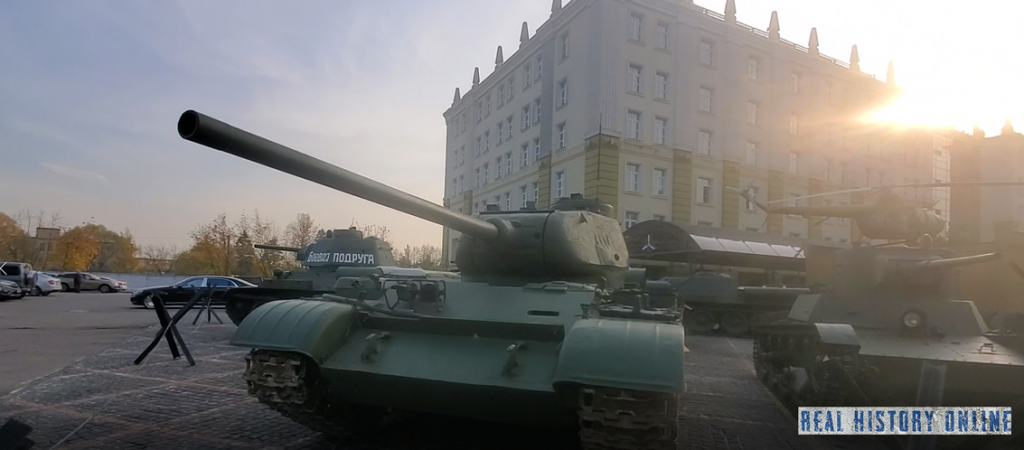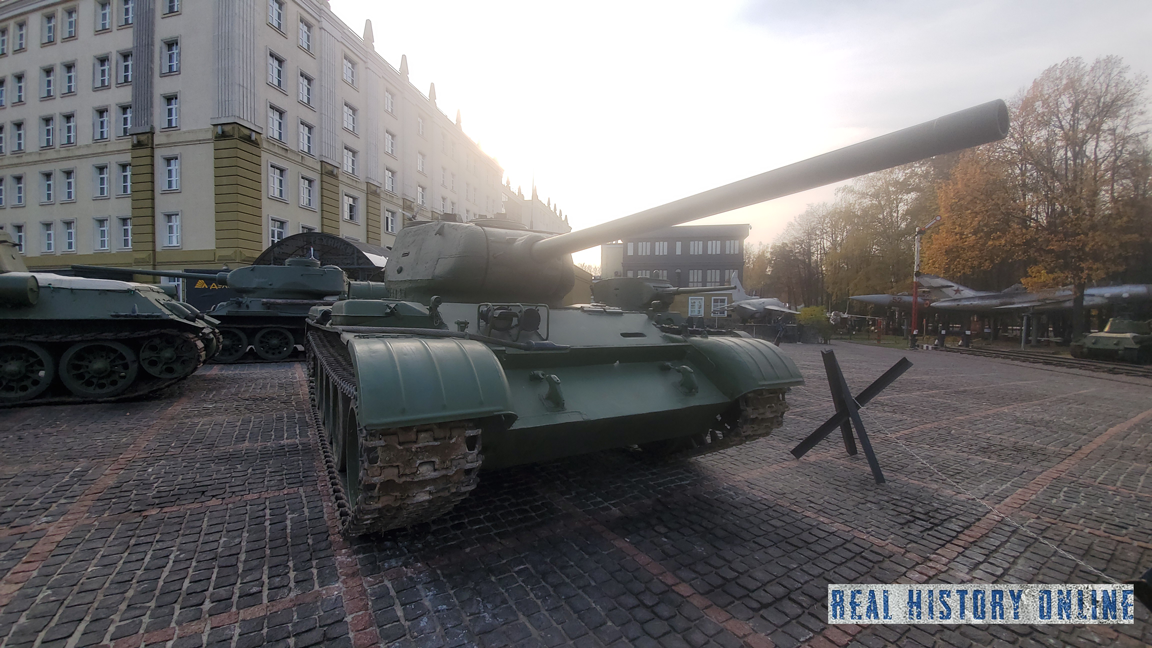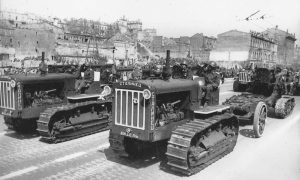T-44 Medium Tank (Object 136),
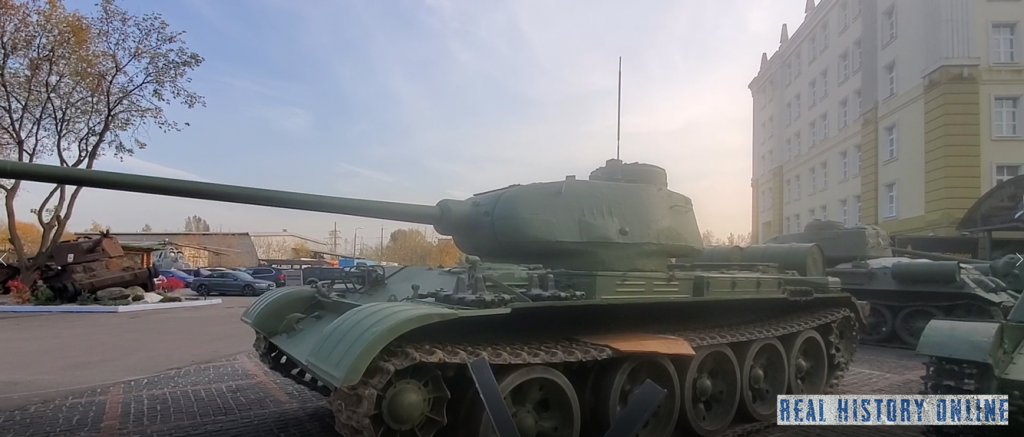
T-44 – A Replacement for the T-34?
Developed in 1943-1944 and was intended to replace the T-34 in the role of the main and medium tank of the Red Army of the Armed Forces of the USSR.
Despite the fact that a total of 1,823 vehicles were built, the T-44 didn’t arrive in time to take part in the Second World War. Serial production of the T-44 began in 1944, however, it was carried out on a limited scale in order to prevent a reduction in the production of T-34-85 during the period of large-scale offensive operations…. In the second half of the 40s, it was replaced by a more advanced T-54. In the role of the main and medium tank, it never replaced the T-34-85, which was already replaced by the T-54. Nevertheless, the T-44, being repeatedly modernized, remained in service with the Soviet army until the 1970s.
The concept of the T-44 tank was finally formed in the fall of 1943 on the basis of the information provided on the combat contacts of the T-34-76 tanks with the latest German heavy tanks. It turned out that in the upcoming battles with the “Tiger” or “Panther”, it had low chances. In this unfavourable situation for a promising medium tank, the optimal integrated solution was the maximum increase in the thickness of the frontal armor in combination with a more powerful (comparable to German heavy tanks) cannon. In fact, the concept of the T-44 tank provided an equalization of the combat capabilities of a medium tank with respect to a heavy one, provided that the superiority of a medium tank in speed and maneuver was maintained.
Having a significant external resemblance to the T-34-85, the T-44 radically differed from it in size, layout and design. Replacing the relatively heavy and bulky Christie spring suspension, used on the T-34, freed up a lot of space with the torsion bar suspension, which made it possible to completely revise the layout of the tank. The fenders disappeared and the side walls of the hull became vertical. The vacated space allowed the new B-44 engine to be positioned not along, but across the tank hull. In the engine, the location of the water and oil pumps was changed, which made it possible to reduce the length and height of the body by 300 mm, save weight and to enhance armor protection. The fighting compartment room was increased due to the engine compartment, and the working conditions of the crew were improved. Thanks to the new layout, it was possible to shift the turret to the rear of the tank, so that the turret was positioned closer to the tank’s center of gravity, which increased the firing accuracy on the move. This also reduced the likelihood of scooping up the soil with a long-barreled gun when driving on rough terrain and made it possible to more evenly distribute the weight. The load on the front rollers was reduced due to the new turret position, and as a result, the frontal armor of the hull was increased to 90 mm, and the frontal armor of the turret to 120 mm. The angle of inclination of the frontal sheet was left at 60 °, as in the T-34, but the sheet itself became monolithic. If in the T-34 the driver’s hatch, located in the frontal armor plate, was the weak point, then on the T-44 the driver’s hatch was removed to the vacant space on the hull roof. All units and mechanisms of the tank were significantly improved. The tank’s crew was removed the radio operator, since the experience of operating the T-34 showed that the tank commander was able to handle the use of the radio station.
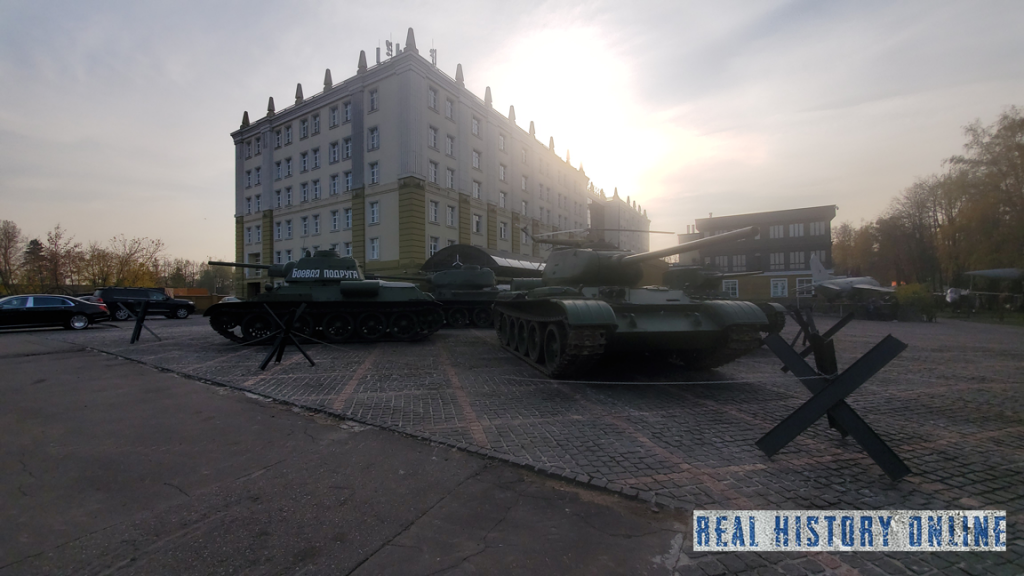
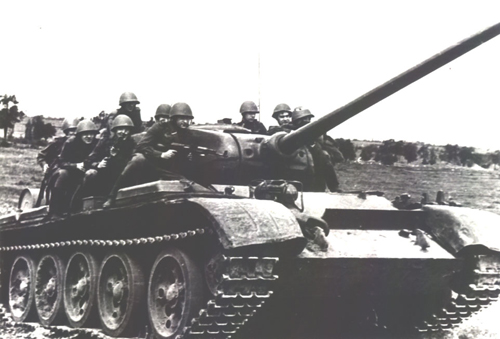
The first two prototypes were ready by the end of January 1944. One of them had a turret ring with a diameter of 1600 mm, the second – 1800 mm. Both were armed with an 85mm D-5T cannon. At the same time, they assembled a third tank with a 1800 mm ring turret and a 122 mm D-25-44 cannon. In May 1944, two more experimental tanks were built with a 1600 mm ring turret and a ZIS-S-53 cannon. Finally, in July 1944, the T-44A was assembled, which became the prototype of the serial tank.
The production of the T-44 lasted until August 1947 and amounted to 1,823 units. Immediately after the war, an attempt was made to modernize the tank by installing a 100-mm LB-1 cannon and steel anti-cumulative screens , but the new vehicle turned out to be overweight and was not adopted for service.
Prior to the serial T-44 tank, the prototype T-44-85 was produced, equipped with a D-5T cannon and a T-44-122 with a D-25 cannon. The T-44-85 tank, armed with the D-5T, was built before the ZIS-S-53 cannon was adopted. As soon as the ZIS-S-53 cannon on the T-34 tanks became standard, the T-44 tank was also redesigned. The 122mm gun was installed on the medium tank at the request of the military, but during the tests it turned out that this gun is not suitable for the medium tank.
In 1945, a new turret was developed for the 100 mm D-10T or LB-1 cannon. A turret with an anti-aircraft machine gun DShK was installed on the roof of the loader’s hatch, the chassis and sides were covered with 6-mm anti-cumulative screens.
